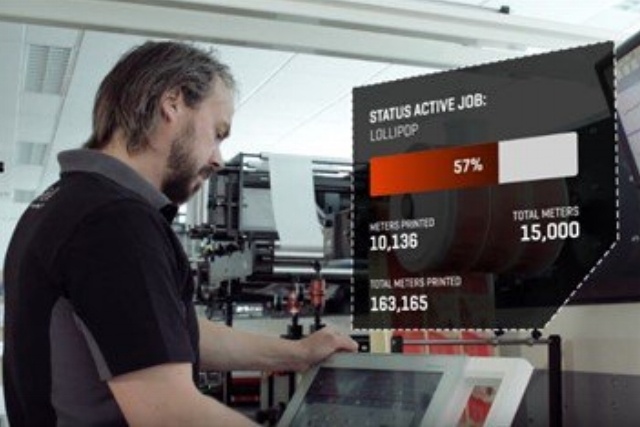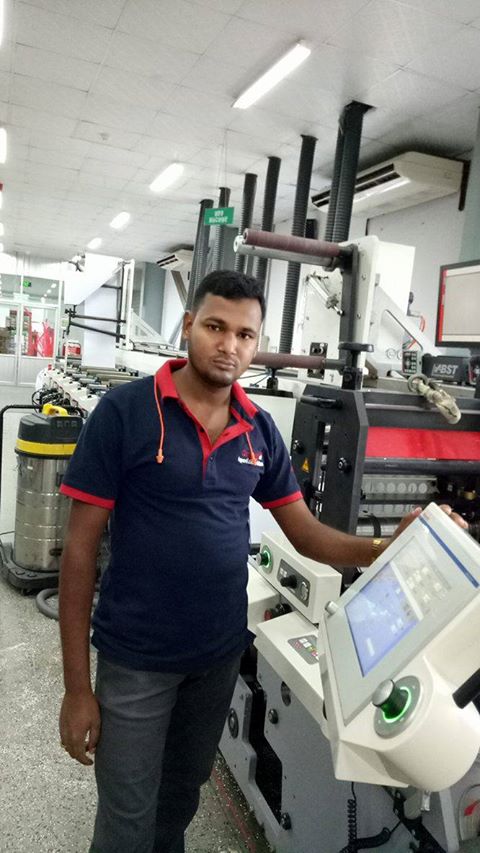"The future cannot be predicted, but futures can be invented," is a quote from Dennis Gabor, known for inventing holography in 1949, for which he received the Nobel Prize.
In our industry, I believe it’s possible to make a fair and educated guess about what the future holds by comparing the narrow and mid web market to other industries, and by actively studying best practices and lessons learned.
Although every industry has different needs, certain common trends can be observed: one of which is big data.
Big data and the printing press
With technology evolving and increasingly being used in our industry, masses of data is becoming available. More importantly, data has value.
New high-tech printing presses are being developed to make the operator’s life easier, and that same equipment has information waiting to be accessed - to help both the print shop and the machine manufacturer improve performance.
We’re now entering a phase in our industry where we’re taking a wider view of the product and looking beyond the machine itself.
We’re helping customers implement production equipment in an overall system that supports the operator, provides improved overall equipment effectiveness (OEE), return on investment (ROI), and more. This system encompasses not only equipment and data but also includes the operator and their know-how.

Reporting on machine performance
All machine manufacturers have on-line support, including remote diagnostics & problem solving.
Another feature that is being implemented by several manufacturers is periodic reporting of their machine’s performance. Printers are already being approached with this data and pro-actively informed about possible issues that might surface on short notice.
Examples of reports for modern presses are possible servo-related issues like gearbox or bearings, the motor, or the drive itself. A maintenance visit can also be highly effective when this information is available, as the factory engineer can bring along the necessary replacement parts.
With this same data, differences between shifts or even operators are also visible.
By comparing different runs of the same job, printers can be informed when extraordinary amounts of waste are being produced. OEMs like UV suppliers monitor system performance and pro-actively inform the client when lamp power and / or curing capacity is decreasing.
Going a step further
Machine suppliers now need to go further than just pro-actively supplying information about the machine or the performance.
Real partnerships should be developed between the customer and machine supplier to assess and improve all peripheral equipment and processes so that the actual printing press will perform to the best of its abilities.
Data combined by the physical assessments of specialists, and verification of this data, will lead to improved productivity. Processes that may seem small to begin with, like a reel change, may result in a significant increase of OEE when improved and measured over time.
By taking this approach, machine maintenance evolves to a mutual maintenance of all the processes that contribute to the success of the heart of the operation: the printing press.

Key factor in preventive maintenance
In the long run, I foresee self-learning technology, maybe even artificial intelligence (AI) being implemented, to make machine uptime and availability to production, as well as OEE as high as possible, and mean time between failures (MTBF) & mean time to repair (MTTR) as low as possible.
I would like to end this series by stating no matter how much technology you put into a press, the human was, is, and always will be the key factor in preventive maintenance. Roles will change, but proud people will make it happen.

Get in touch
Please share any thoughts you have on this topic in general or the above. At MPS, we welcome your replies and suggestions
With this blog, the series about preventive maintenance is complete.
However, MPS has taken the next step in developing and implementing the future of machine maintenance and is happy to inform you in detail about our Performance Programs that are part of our “Beyond the Machine” philosophy.
I am pleased to hand over my blog over to Marius van Lith who will keep you informed about the MPS approach to “Beyond the Machine”.
In the meantime, you may be interested in reading my other blogs in this preventative maintenance series:
Part 1: A machine needs maintenance!
Part 2: Keep your flexo press and operator at their best
Part 3: Investing in a new press?
Part 4: Schedule and implementation
Part 5: Who should maintain your printing press?